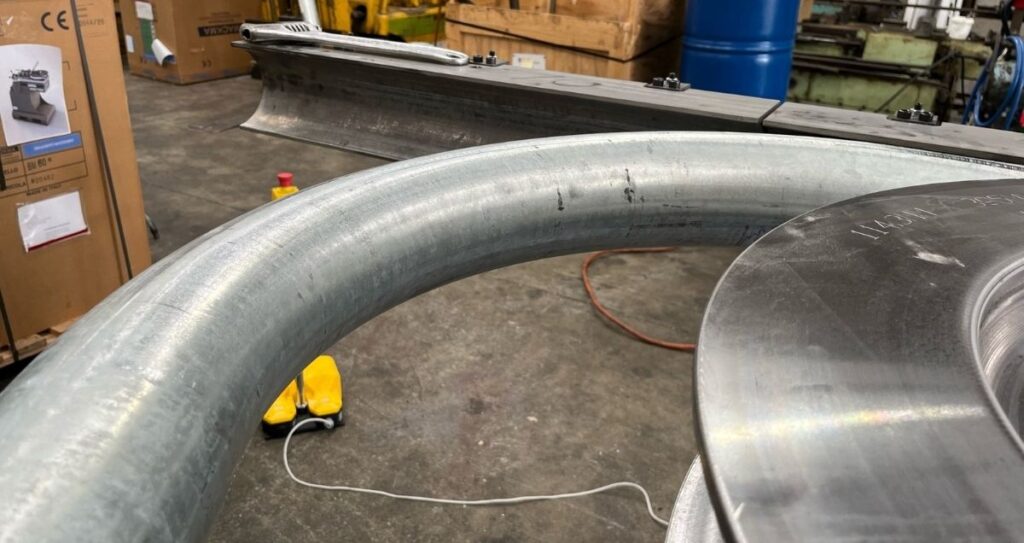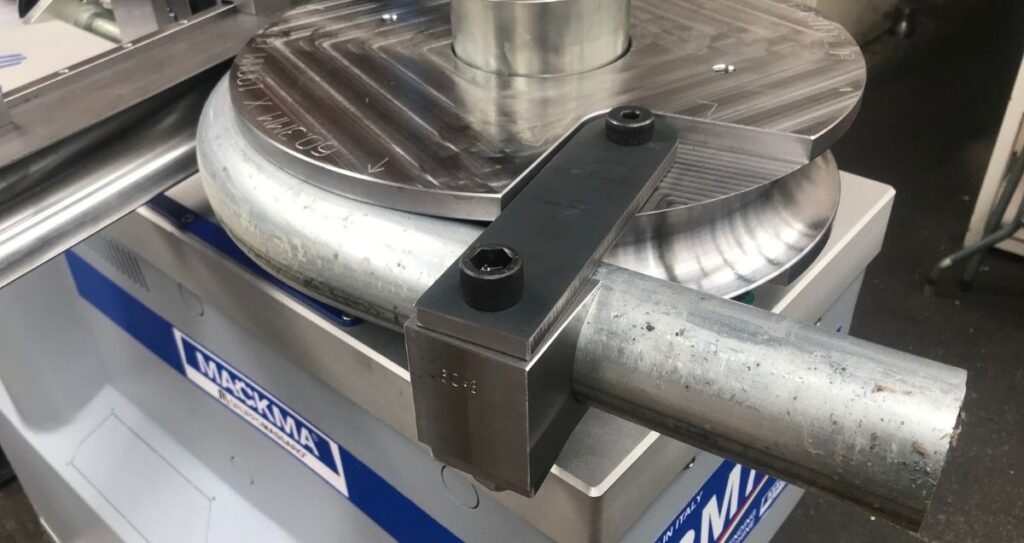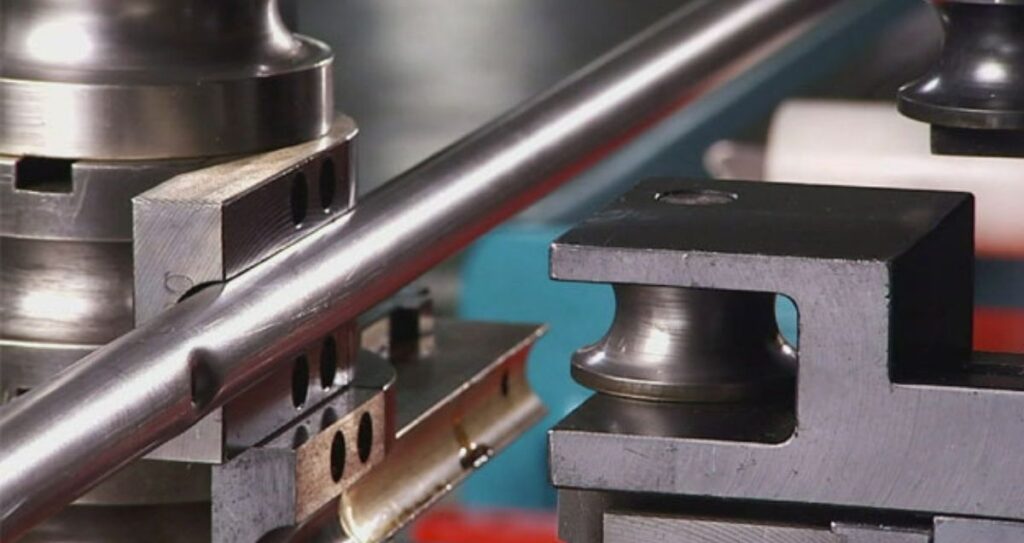What is Tube Bending?
Tube bending machine helps you in bending tubes permanently. It is one of the fabrication methods to bend pipes. After bending a tube, you can use this in many instruments like trombones, railings, stairs, handles, furniture frames, automotive parts, air conditioning equipment, etc.
The start of a bending operation is permanently fixed at two points, and then a rotating die, roller, or press enforces the bend. The outcome of tube bending is dependent upon many factors like tubing material, tooling, lubrication, the amount of pressure applied, and the bending geometry.

How it works
To control mechanical parts and hydraulic systems, a tube bending machine works with a computer. A tube bending machine can assist you with constant bending and precise dimensions. Indeed, it eliminates confusion surrounding bending techniques.
Five main elements play a vital role in clean and precise bending
- A bend die is a round part that controls the radius of the bend.
- Clamp die helps the bend diet in gripping the tube.
- The wiper die prevents wrinkles on the inside of the bend.
- Interlock mandrel works with wiper die to avert wrinkles on the inside of the bend.
- The pressure die applies the appropriate pressure needed to the tube to bend it correctly.
To get the perfect bend, all these parts work together with the computer’s specs.
Types of Tube Bending Machine
There can be two types of tube bending techniques, form-bound and free form bending. Form-bound bending is dependent on the geometry of the die, like press bending and rotary draw bending. And Freeform bending is contingent on the movement of the tube through the tooling like roll bending.
Cold tube bending and Hot tube bending are the main tube bending techniques. Here are the standard cold tube bending techniques:
Press Bending
How Press Bending works
- It is the oldest industrial tube bending technique.
- In this procedure, the tube is fixed at two points.
- After that, the bend die is forced against the tube to match the shape of the bend.
- The external dimensions of the cylindrical ram give the attribute of the bend to be imported to the tube.
Pros of Press Bending
- Press bending is a quick bending method.
- It does not need lubrication and cleaning.
Cons of Press Bending
- With the use of press bending, it is hard to make a minor degree of bend.
- It is prone to confrontation in the internal and external curvatures.
- You will face difficulty in controlling this method
- It often builds an oval cross-section. But it depends upon the tube‘s wall thickness.
- When a consistent cross-section is not required, you can use this method for tube bending.
Rotary Draw Bending
How Rotary Draw Bending works
- Firstly, the bend die decides the radius of the bend. By rotating its outline, it imparts the bend to the tube.
- Clamp die grips the tube from the outside diameter and clamps it to the bend die.
- The wiper die helps to prevent wrinkles of the radius from inside.
- A pressure diet provides an appropriate amount of force to bend the tube and maintains constant pressure at tangency.
- Mandrel helps in tube bending to prevent collapse, wrinkle and ovalisation.
Pros of Rotary Draw Bending
- Create exact bends, constant diameter with minimal ovalisation
- Best for cross-sectional shapes like square, oval etc.
Cons of Rotary Draw Bending
- This method is only for tube bending. That is why less flexible
- It needs tooling for each different tube.
You can use this method in pipe fittings, instrument tubing, handrails, automotive and aerospace parts.

Compression Bending
How Compression Bending works
- Firstly, a pressure bar pressed a tube against the fixed form block.
- Now, the wipe show is pressed and drawn against the radius of the block.
- At the end, it gives an oval cross-section in the bent area.
Pros of Compression Bending
- It is more cost-savvy than rotary draw bending. Because it has a simple set-up.
- This process is perfect for circular hollow sections.
Cons of Compression Bending
- You can not use a mandrel to support the inner diameter.
- You can not use this process in bending tubes to a small CLR.
This method is mainly used in bending symmetrical workpieces and electrical conduits for structural application.
Roll Bending
How Roll Bending Works
- It contains two stationary rotating rollers and a moving roller.
- The static rollers rotate in the counter direction of the moving roller.
- The bend radius is gradually formed as the tube moves back and forth on the rotating rollers.
Pros of Roll Bending
- You can use this machinery in creating bends with large CLR.
- It can integrate secondary operations like punching and notching in-line.
- Roll bending can form complicated shapes.
Cons of Roll Bending
- It does not fit well to small quantity production runs.
With this method, you can work on structural applications, powder transfer systems, and much more.
Benefits of Tube Bending Machine
Tube bending machines can help you with perfect tube bending in so many ways. It is a fully automated machinery that requires less human effort. When it comes to bending the tube perfectly, it is more precise and reliable. Every time whenever it needs, it is capable of enlisting the proper tooling techniques. At affordable prices, it can benefit your manufacturing business in an exemplary manner.

Delahenty Machinery- Robust Machinery Solution
Delahenty Machinery has been serving powerful machinery in the manufacturing industry in Australia since 1964. We specialise in tube manipulation and cutting machinery for a wide range of sectors, including defence, shipbuilding, furniture, caravan, construction, playground, automotive, HVAC, truck, tram and bus.
Select your machinery and contact us for more details.

